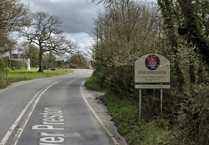FEW clues survive of Newton Abbot's intimate link with Newfoundland. And those that do are just as likely to puzzle as enlighten those that notice them. But for more than 200 years, Newton Abbot played its full share in the Newfoundland Cod Fishing Industry, which boosted the economy and provided employment for thousands of men from the West Country. 'Newton Abbot was the centre of the recruiting ground for shipmasters. All the local inns were signing up places. Many of the men had no experience of the sea and signed up for the year-long trip seeking adventure,' said Newton Abbot Museum's curator, Felicity Cole. The trip lasted a year from summer to summer and became quite a tradition among local farming communities. Later on, women went out too to gut and salt the thousands upon thousands of tonnes of cod, eaten in many a Catholic country on Fridays. Newton Abbot's links went further than providing manpower. The cod industry impacted hugely on the local economy in ways that Mrs Cole and her volunteers are still discovering. It is to form the subject of an exhibition opening on February 6. At the moment staff and volunteers are trawling through masses of documents, trying to piece that history together. The Rope Walk, East Street, got its name from manufacturing rope for the fishing boats. A certain Mr Crew from Newton Abbot kitted out crews with leather gear and sou'westers – and was paid in dried cod. Tiny Holbeam Mill, just outside the town, once manufactured knives and hooks for the whole of the Newfoundland fishing industry. The museum team have evidence that several shipmasters lived in the town and used local merchants to victual up the ships before setting off from Teignmouth. In 1809 for instance, 1,200 sailors assembled in the town hoping to be hired by 16 ship captains. Queen Elizabeth I tried to forbid the setting up of a colony there, but she was fighting against the inevitable. The first one was formed in the late 1500s, led by Sir Humphrey Gilbert, Sir Walter Raleigh's half brother and peopled in part from south Devon. By the early 1800s St John's had grown to about 20,000 souls. How hard the life was can only be guessed at. A hint is given in the fact that women fishworkers used to stow their children into empty fish barrels with a few toys to keep them safe while they turned acres of fish laid out to dry To start with St John's was a transitory sort of place, burning down at regular intervals. On one occasion, after fire had destroyed the town, Newton Abbot was virtually emptied of its carpenters and stone masons, as they all went out to help rebuild it. It seems that people moved to and fro between Newton Abbot and Newfoundland and Mrs Cole is anxious to hear from anyone with Newfoundland connections. 'I can see this will be an evolving part of the exhibition, as we learn more. I'd love to hear from anyone with family connections. Does anyone have a photograph of a great great granny born in Newfoundland?' She has already made contact with the Devon Family History Group and the Newfoundland Geneological Society, University and Historical Society and is hoping to generate enough interest so that a permanent link can be formed with St John's. Anyone with information should contact Felicity Cole on 01626 201121/201120.



